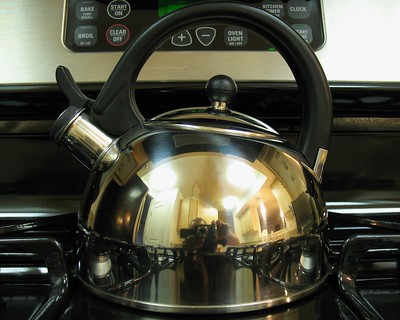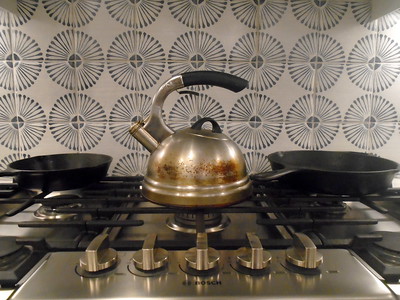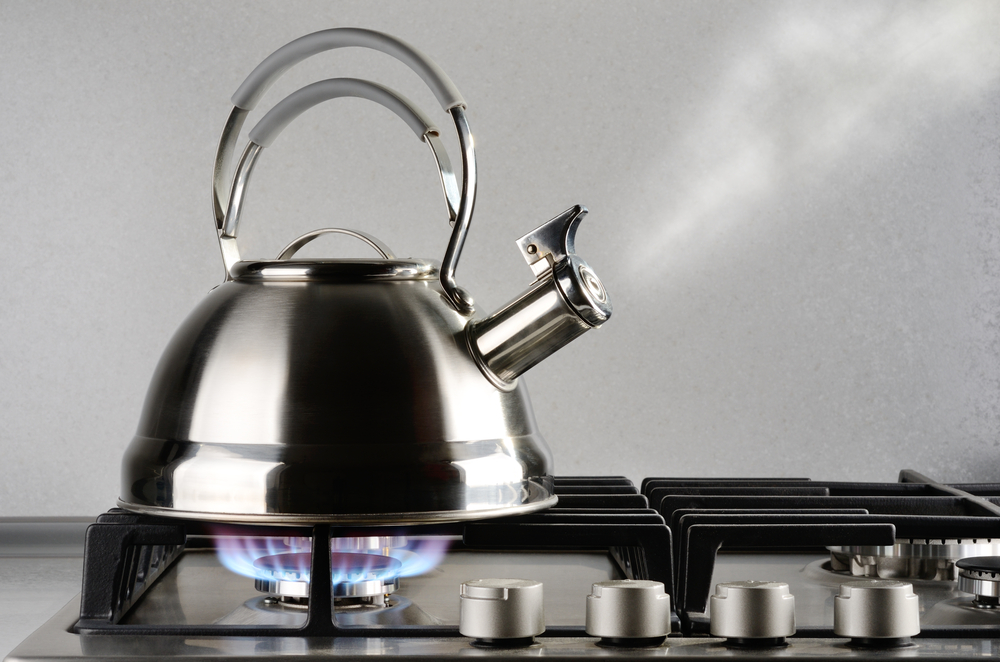Learning how to use a stovetop tea kettle can be more useful than you’d think. Some people enjoy the classic appeal of heating their tea kettle on the stove as opposed to utilising an electronic device. A stove tea kettle can also be ideal if your electricity shuts off and you still have access to gas.
Stovetop options are, of course, much less popular than electric tea kettles today. Thanks to its convenience and ease of use, the electric kettle has become the standard for many households. This means you may not know how to use a kettle without electrical power.
The good news? Traditional tea kettles are often a lot simpler than you’d think. From whistling tea kettles to a basic stovetop solution to help you boil water, you’ll be able to grasp how to use these systems in no time. Here’s your guide on using a stovetop tea kettle.
How Do You Use a Tea Kettle on the Stove?
With an electric kettle, all you need to do to start boiling water is fill the kettle, plug it into your wall outlet, and switch it on. Using a kettle on the stove is slightly different, but it’s not as complex as it might seem. We’d recommend starting by cleaning out your new tea kettle and boiling water in it a few times to remove any unwanted taste from the metal inside.
Before Using a Kettle on the Stove
• Make sure you don’t overfill it: Adding too much water to your kettle will mean it takes longer to boil. When the water reaches its boiling point, it could also more easily bubble over if your kettles are overfilled.
• Don’t add your tea leaves: Although some people prefer to brew tea leaves within their tea kettle when they boil water, this makes your tea kettle much harder to clean. There’s a chance your tea leaves will burn the inside of the kettle. Even green tea can leave unwanted stains. Add your tea leaves after the water is boiled to brew tea correctly.
• Keep an eye on the kettle: If you haven’t boiled hot water in a tea kettle before, it’s difficult to predict when it will be done boiling. While many stovetop kettles whistle, not all will include the traditional kettle whistle.
Step-by-Step Guide on How to Use a Stovetop Tea Kettle
To make tea with a stovetop tea kettle, you’ll follow a similar process to using electric kettles. When you use a tea kettle on the stove, you’ll need to start by cleaning your tea kettle as thoroughly as possible. This is particularly important with new stovetop kettles because they can have a little bit of an odd taste when you haven’t used them before.
Step 1: Fill Your Stovetop Kettle Carefully
Add cold water to the tea kettle to fill it halfway. Some stovetop kettle products come with a kettle fill line to ensure your boiled water doesn’t bubble over. Make sure you don’t add too much water.
Step 2: Turn On Your Stove
Turn your gas stove or electric stove on at the desired temperature. High heat will boil your water faster. If it’s your first time using a tea kettle on the stove, though, you might want to start with a lower temperature to be cautious.
Step 3: Heat Your Kettle
Make sure you have enough time to focus on making tea when using a stovetop kettle. It’s very easy for the kettle to boil over if you’re not watching it. Whistling kettles will emit a whistling sound to help you, but it’s best to watch your gas or induction stove to avoid burning and other issues.
Step 4: Pour the Water
Pour your boiled water from the stovetop kettle into a separate enamel kettle or teapot designed for making tea. Here, you can add the green tea, black tea, or herbal teas you want and leave them to steep for a while. Most herbal teas will need to steep for a little while to create the perfect flavour. It’s helpful to have your teapot on a potholder to keep it steady.
Step 5: Make Your Tea

Finally, you come to the best part of making tea. Simply pour yourself a flavorful cup of your favourite tea into the cup of your choice. Make sure you turn your stove or heating element off before you start enjoying your cup of tea.
Rinsing out your tea kettle and removing any excess water is usually a good idea. The last thing you want is for warm water to sit in the bottom of the kettle and build up mineral deposits over time. Most brewing methods recommend washing your kettle properly every time you use it.
How a Kettle Works: Electric and Stovetop
To understand the difference between a stovetop tea kettle and an electric kettle, you need to know how each device works—both forms of the kettle were invented to focus on enabling the boiling process by heating water.
Electric Kettle
With an electric kettle, the process looks something like this:
Filling your electric kettle puts the water you want to boil directly in contact with a metal coil or “heating element” within the body of the kettle. Switching your kettle on creates an electrical circuit, which pushes energy through the heating surface. The coil has an electrical resistance which turns electrical energy into heat energy as your kettle works.
The heat you expose to the water in your electric tea kettle gradually turns your cool water into hot water. Eventually, the hot water is driven to the boiling point.
A sensor or thermostat within the tea kettle detects when your hot water becomes boiling water and breaks the circuit for your electrical coil. This causes the tea kettle to stop heating up. Tea kettles sometimes whistle instead of turning off automatically to let you know they’re done boiling.
Stovetop Kettle
A stovetop kettle works similarly, except rather than using electricity to heat a coil, you’re using the heat of your gas or induction stovetop to directly heat metal to the right temperature. The metal of your tea kettle becomes extremely hot, boiling the water inside. Most of the time, stovetop kettles will have a special design that causes steam to be pushed out of the kettle when the boiling process is complete. This is what creates the whistling tea kettle.
A whistling kettle will inform you when your kettle heat reaches the right temperature. You’ll then need to remove your boiling kettle from the high heat and pour the water into a separate container.
Tea Kettle vs Teapot
To use a tea kettle correctly, you need to understand what it is and isn’t. So what’s the difference between a tea kettle and a teapot?
A lot of people assume tea kettles and teapots are the same things. They’re both very different from an electric kettle because there’s no way to plug them into an outlet to heat up the water within. However, how you use a tea kettle is generally different to how you use a teapot.
Teapot
On the other hand, a teapot is intended to be a container for boiling water, where you can steep your green tea, white tea, or any other tea leaves you like. What makes it difficult to tell the difference between these devices sometimes is that a tea kettle can sometimes come with a strainer included, so you can include the tea leaves in your kettle while you heat the water inside of it.
Tea Kettle
A tea kettle is a device you use to heat water for your tea break. This device is usually a product made out of metal or a highly conductive material capable of absorbing the heat of your stove. The kettle can boil water without causing any damage to the device itself. However, you will need to be very careful with pouring hot water when using a tea kettle.
Brewing Tea Leaves

Just keep in mind that using tea leaves within your whistling tea kettle can cause it to become damaged a lot faster. Brewing tea with your tea kettle may also mean you don’t have as much control over your loose tea leaves and tea bags. This means that your herbal tea might taste different to what you’d usually get from a standard teabag.
Delicate teas can often be destroyed by the boiling action of a tea kettle too. This means you won’t get the same flavour from a cup of tea if you’re using certain white tea, green tea or herbal tea options.
Is a Stovetop Kettle Better Than an Electric Kettle?
Electric Tea Kettles
An electric kettle can be a very convenient way to make a delicious cup of tea. However, there are some downsides to using it. Electric kettles can easily build up mineral deposits over time which can cause problems with the taste of your tea. Electric kettles also get damaged over time, which means you have to replace them frequently, particularly if you don’t have boil-dry safety features and other similar capabilities.
Modern electric kettles provide a quick and easy way to heat water. You don’t have to watch while the water boils to ensure nothing spills over. Plus, you can use all kinds of filtered water and tap water with your kettle with no problems. Some electric kettles even come with special features for filtered water for a fresher-tasting hot water experience.
Stovetop Tea Kettles

Stovetop kettles aren’t as convenient as electric kettles. However, you can use a tea kettle in a wider range of environments. For instance, if you follow tea kettle safety tips carefully, you can heat water outside. You can even get access to hot water if you don’t have electricity.
While it takes longer to boil hot water with a stove tea kettle, you’ll also have a little more control over the desired temperature of your water if you take your time to experiment. Like electric kettles, stovetop kettles can use tap water or filtered water. You can even use stovetop kettles to make distilled water. However, you will need to be more cautious when you pour hot water from a tea kettle.
An oven mitt might be necessary to protect against the heat of the kettle, and you’ll need to place the kettle on a heat-resistant surface after using it to pour the water into your black tea leaves.
Using a Stovetop Tea Kettle Correctly
We hope you’ve found our guide on how to use a stovetop tea kettle useful. One last thing to keep in mind is that water boils on the stove at a different pace than your electric tea kettle. While electric kettles switch themselves off automatically, you’ll need to keep an eye on your stovetop kettle to ensure the water doesn’t boil over after it reaches boiling point.
Many whistling kettle designs ensure you can hear when your water is ready by releasing a high-pitch sound when your water is done. However, it’s still important to be as cautious as possible and avoid leaving your tea kettle unattended for too long.

